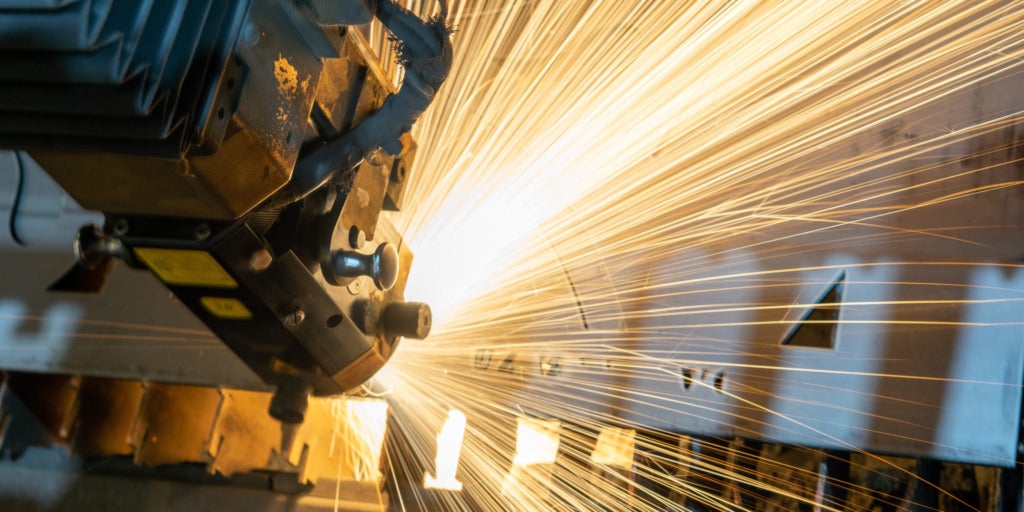For decades, factories have been at the forefront of innovation around process improvement, robotics, and automation. And as the new era of ‘Industry 4.0’ begins, a whole new generation of manufacturing automation solutions are coming into play – from IoT to 5G and artificial intelligence.
But there is one area where automation in manufacturing is lagging behind: the back-office. According to a recent study by McKinsey, the manufacturing sector is one of the most automated sectors, yet paradoxically it is also one of the sectors with the highest potential for further automation. The current reliance on manual back-office processes in many factories is surely a major reason for this paradox.
In this blog we explore why more back-office manufacturing process automation is needed – and what kinds of processes could be improved with digital technology?
What is manufacturing process automation?
Manufacturing process automation is about using digital technology to replicate many manual back-office tasks. It uses various technologies to perform jobs that previously would rely on paper and people sending faxes or emails.
Using workflow creation tools, it is now possible to digitize a wide range of tasks that were originally carried out by administrators, accountants, office managers, operations staff, and HR departments.
By using manufacturing automation solutions, many of the activities which would typically take up hours of your employees’ weeks can be automatically completed with workflow technology instead. That saves manufacturing back-office teams precious time, and allows them to focus on more high-value work.
Tools like Nintex let you digitally map out complex back-office processes in manufacturing. You can then set these processes to trigger in response to specific inputs and automate many different processes.
What can back-office manufacturing process automation do?
Process automation technology is capable of replicating a wide variety of tasks that are common in factory back-offices. These include tasks carried out by almost all departments, such as:
- Inventory management
Manufacturing automation solutions can be used to automatically reorder inventory when it is running low. Each time an employee takes goods out of your warehouse, they can log this within your system. An automated workflow would then recognize if inventory is getting low, and automatically purchase more of the material from your supplier. This saves back-office staff from monitoring inventory levels or having to make the orders manually.
- Onboarding suppliers
If your manufacturing business has recently begun a relationship with a new supplier, you will need to generate a wide variety of documents and supplier agreements. Ensuring all these documents are filled in and signed for is important for contractual and legal reasons.
And this is where document automation helps. All the required documents your back-office staff need, can be automatically sent to the supplier – who can sign any contracts digitally. Signatures and other details can all be verified independently by the system. This avoids the risk of staff forgetting to send any crucial documents or failing to collect important information.
- Human resources
Factories must regularly hire temporary staff in line with seasonal changes in demand. This means manufacturing HR departments are typically very busy searching for labor and producing relevant employment documents.
Manufacturing automation solutions can make this process much more streamlined. All relevant staff onboarding and offboarding documents are produced automatically, signed for, and stored securely. That means you are in compliance with all labor laws and avoiding any unnecessary friction.
- Accounting and finance
Manufacturing finance departments rely heavily on data entry, communications, and working with spreadsheets and accounting software to ensure that suppliers get paid, and customers are paying bill on time. For many manufacturing back-office finance departments, this process continues to rely on a mix of paperwork and manual data entry – shifting information between computer systems. There is real potential here for errors, mistakes, and data loss.
But once again process automation technology can really streamline these manufacturing workflows. For example, robotic process automation (RPA) can carry out all manner of data entry tasks, repeating tasks indefinitely without ever getting tired.
- R&D
Research and development at manufacturing companies often relies heavily on workflows. From approvals for funding to creating patent applications, R&D can be held up by manual or paper-based processes. If it relies on staff receiving paper applications or filling in forms, there is a high potential for the process to be slowed down or documents to be lost.
By contrast, using workflow automation software means that R&D processes will be completed much more smoothly.
If you’d like to learn how Nintex can help you improve your back-office manufacturing processes, read more here.Get started with manufacturing automation solutions
There are so many ways that automating back-office processes can save you time and money:
- Ends your reliance on paper processes
- Improves quality of back-office processes
- Saves time for staff in all administrative functions
- Reduces the risk of human error
- Means people spend less time on repetitive, low value work
So where do you begin?
For many companies, it can be valuable to start by automating simple processes that are repeated regularly. You can then experiment with manufacturing process automation solutions and see how they work for you.
Ready to get started with automation in manufacturing? Try out Nintex’s templates. We’ve built hundreds of templates that can help back-office staff streamline manufacturing processes. Try downloading our templates and get started with manufacturing process automation today.







